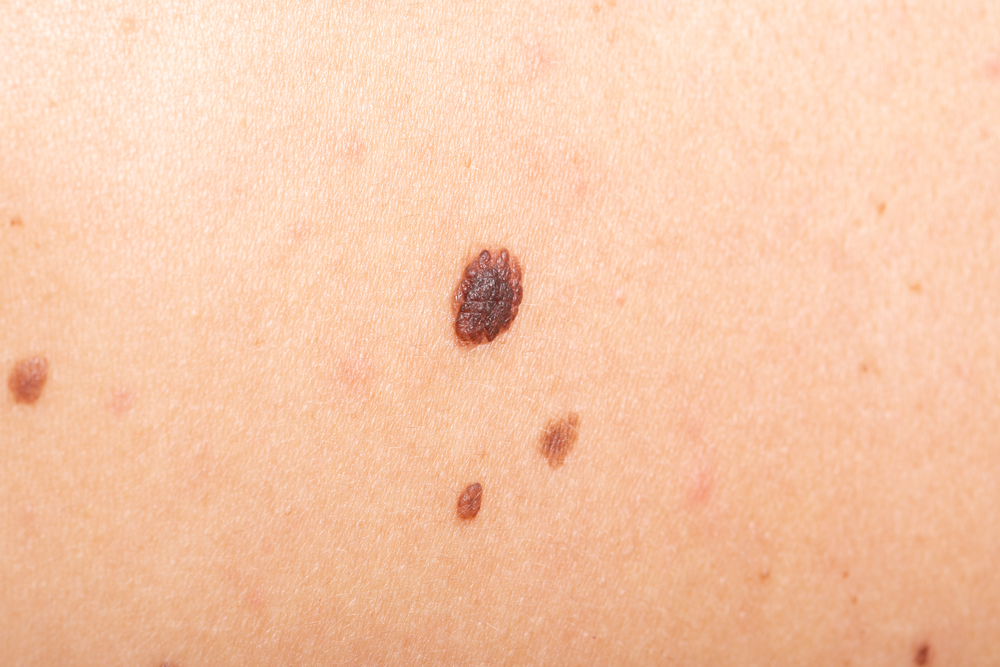If you’ve noticed hair sprouting from a mole, you might feel a stab of worry. Is this a sign of cancer? What should you do about it?
At SIE Medical, we understand that new skin changes can be concerning. It’s crucial to distinguish between factual information and common misconceptions regarding mole changes and their connection to cancer risk. We’ll explore the reasons why hair may grow from moles, how cancer cells differ, and the key indicators for detecting skin cancer.
Why Do Cancer Cells Sometimes Produce Hair?
Cancer cells are unique because they often lose the ability to “follow the rules” of normal cell growth. This means that instead of developing into one specific type of tissue, cancer cells can transform into many different cell types.
Although not the same as moles, teratomas offer a striking example of the unpredictable nature of cancer biology. These rare tumors develop from cells capable of differentiating into various tissues, leading to the discovery of hair, teeth, bone, and even glandular tissue within them. Understanding the behavior of cancer cells, as illustrated by teratomas, is crucial.
When a mole turns cancerous—most commonly into melanoma—it can stimulate abnormal growth of cells in and around hair follicles. This doesn’t mean the mole is suddenly “producing” hair on its own, but rather that cancer’s impact on surrounding tissue can sometimes make hair growth possible. It’s a strange biological quirk, one that shows how complex and unpredictable cancer cells can be.
What Does Hair on a Cancerous Mole Look Like?
So you’ve noticed hair growing out of a mole. First, make a note on the type of hair that you see.
If a mole develops cancer, any hair that appears is usually fine and sparse rather than thick or robust. The texture may be softer or more brittle than normal hair because the follicle isn’t functioning as it would on healthy skin. That said, the mere presence of hair doesn’t automatically mean cancer is present.
Many people worry when they see hair in a mole. However, long-standing dermatology wisdom holds that hairy moles are often benign. What matters most is not the hair itself but whether the mole changes in size, shape, or color. Hair texture, length, and density are not reliable indicators of cancer.
Can Non-Cancerous Moles Grow Hair?
Yes, and quite commonly. Non-cancerous moles can grow hair because they often develop right over hair follicles. The hair follicle continues to function as usual, sending a strand of hair up through the mole. In fact, dermatologists often point out that a mole with healthy, growing hair is less likely to be dangerous, though this should never be used as a blanket rule.
Some people pluck or shave hair growing from moles for cosmetic reasons. While this is generally safe, any trauma to a mole should be done gently. If the mole bleeds, crusts, or changes after you’ve removed hair, it’s a good idea to have it checked.
Hair Growth Is Not the Only Factor
While hair in a mole can get your attention, it’s not the most important sign to watch for. Skin cancer—particularly melanoma—presents in a variety of ways. Dermatologists often use the “ABCDE” rule to help patients recognize suspicious changes:
- A – Asymmetry: One half of the mole looks different from the other.
- B – Border: Edges are irregular, ragged, or blurred.
- C – Color: Uneven shades of brown, black, red, white, or blue.
- D – Diameter: Larger than 6mm (about the size of a pencil eraser), though melanomas can be smaller.
- E – Evolving: Any change in size, shape, color, or sensation, such as itching or bleeding.
Other warning signs include nodules that rise above the skin, moles that ulcerate or ooze, or areas that suddenly develop new pigmentation. These changes are far more significant than whether or not hair is present.
Why You Need a Biopsy to Check if a Mole is Cancerous
A biopsy is the only way to tell for certain that a mole is cancerous. During this procedure, a dermatologist or oncologist removes a small sample of the mole and examines it under a microscope. This process reveals whether cancer cells are present and, if so, what type of skin cancer is involved.
Relying on appearance alone—even with guidelines like the ABCDE rule—can be misleading. Some dangerous melanomas look deceptively harmless, while some benign moles appear unusual. That’s why medical insight is essential.
Prevention and Monitoring
Skin cancer prevention starts with awareness. Here are a few proactive steps you can take:
- Perform monthly self-checks: Examine your skin from head to toe under good lighting. Don’t forget the scalp, soles of the feet, and under the nails.
- Schedule regular dermatologist visits: Annual skin exams are recommended, or more often if you’re at higher risk.
- Protect your skin from UV damage: Shield your skin from UV radiation by applying broad-spectrum sunscreen, wearing protective clothing, and staying out of the sun during its strongest hours.
- Pay attention to family history: If close relatives have had melanoma or other skin cancers, you may have a higher genetic risk.
Remember, prevention doesn’t eliminate risk, but it dramatically reduces your chances of developing advanced disease.
The Role of Integrative Oncology for All Types of Cancer
If a mole biopsy confirms cancer, an integrative oncologist becomes a key part of your care team. Oncologists specialize in cancer diagnosis, staging, and treatment, tailoring a plan to your needs. This might involve surgical removal of the cancer, immunotherapy, targeted therapies, or radiation, depending on the type and stage of the disease.
Beyond treatment, integrative oncologists also help with prevention strategies and long-term monitoring. Once you’ve had one suspicious mole, you may be at greater risk for others, making ongoing skin checks essential.
So, can hair grow in cancerous moles? The answer is yes—but it’s rare, and it’s not a reliable indicator of cancer on its own. Non-cancerous moles grow hair much more commonly, and in many cases, hairy moles are benign. What truly matters are changes in a mole’s appearance, texture, or behavior.
At SIE Medical, we offer comprehensive cancer care that emphasizes prevention, early detection, and personalized treatment. If you’re worried about a mole or want to take proactive steps for skin health, contact our team today. Your peace of mind and long-term well-being are worth it.


